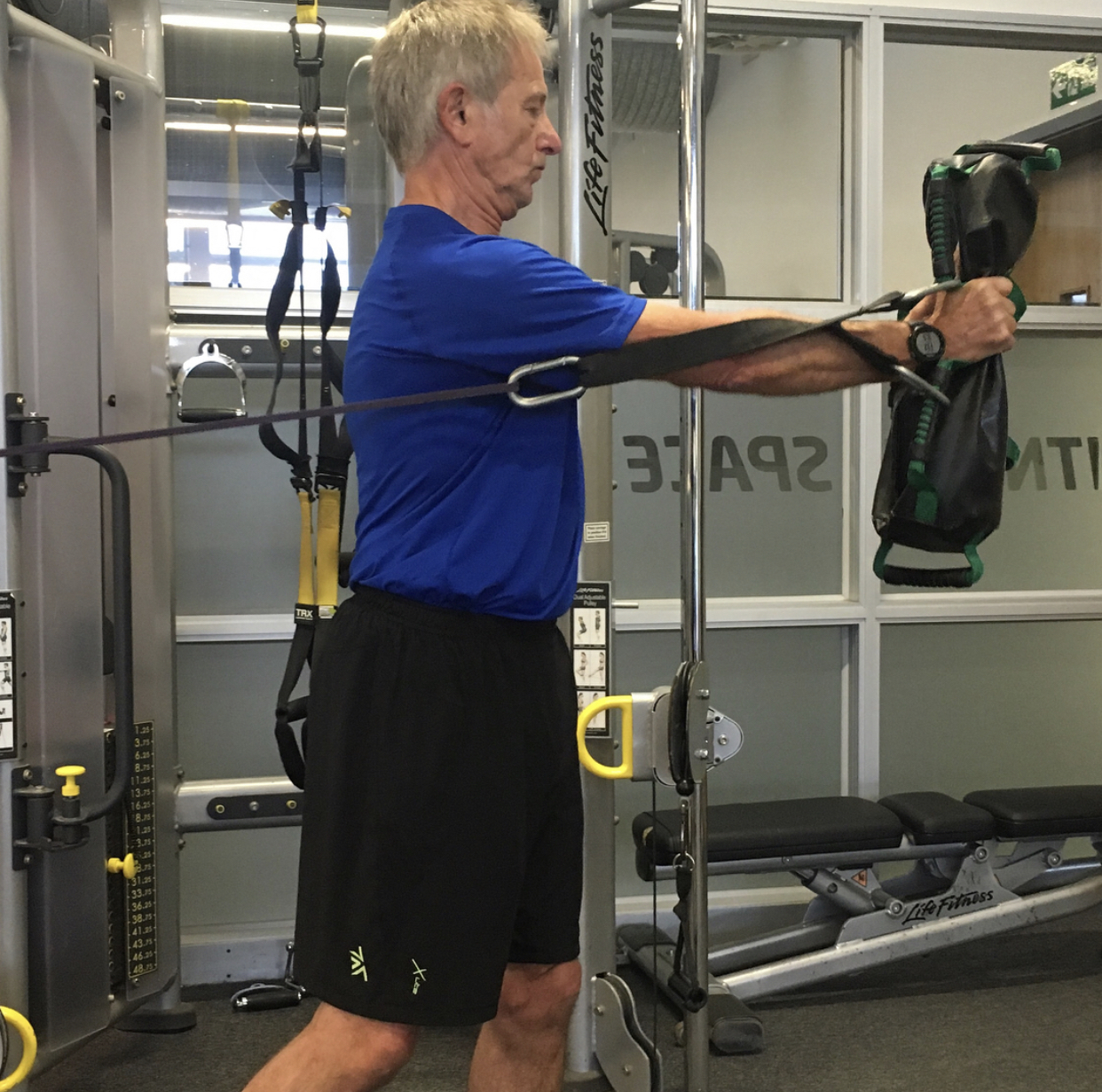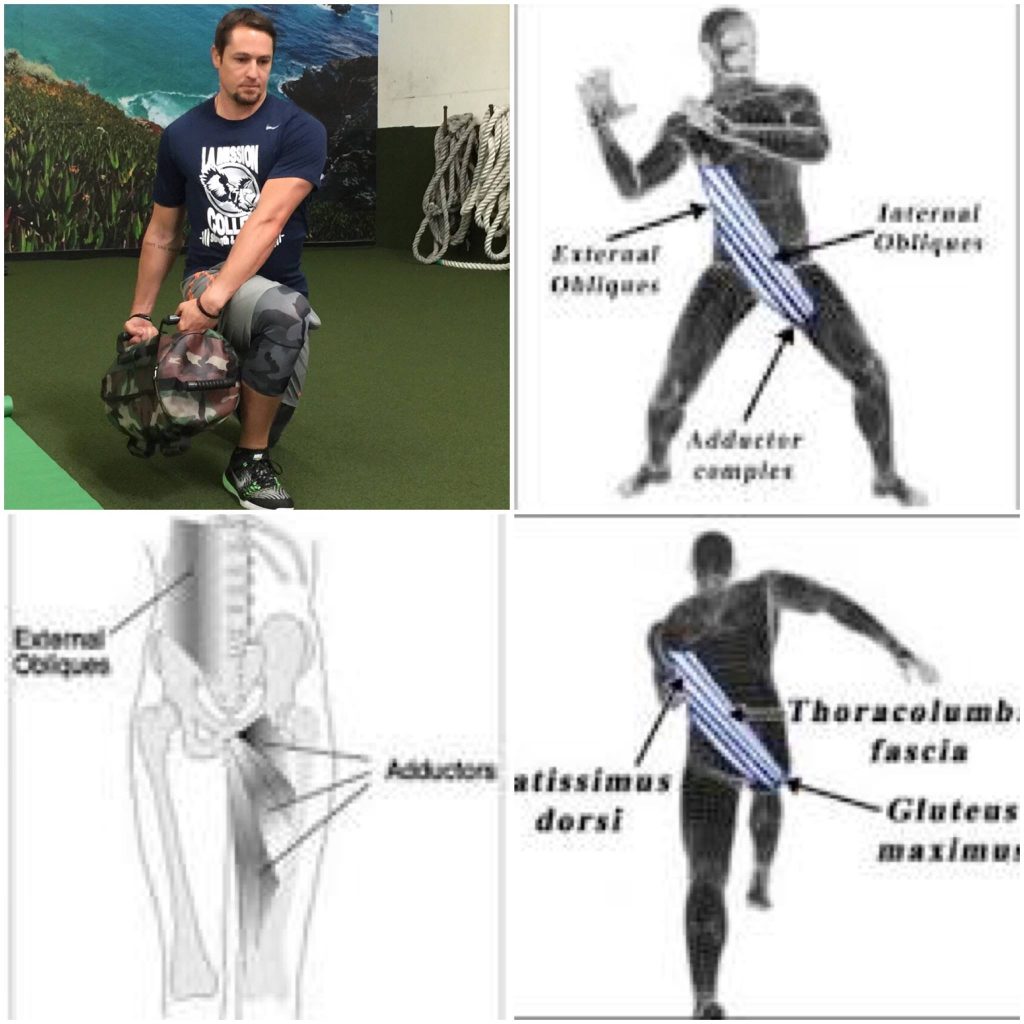Get Strong Without Breaking Your Back!
2019-03-10
Seeing people’s reactions to some of our DVRT drills really amazes me. We live in a time where if something doesn’t make immediate sense to us, we write it off as “crazy”. This can be especially difficult because even those that identify themselves as functional based coaches, often get caught in the trap of talking about muscles and not movements.
The most common way we see this is through rotational movements. When people see a rotational exercise they can’t figure out what muscles are they working? Is it a “leg exercise”, “core drill”, what is it? My answer is yes to all the above!

When we think about movement patterns we tend to focus on the chain of muscles that helps us make complex movements seem simple. We throw and kick balls without thinking about the complex interplay that the chains of our bodies have and we notice when we don’t do them right because THAT’S where we get that achy shoulder, or problematic low back.

When we mention chains of the body, there are some that think they are myths like Big Foot. The truth is that these chains have been known by physical therapists and researched for several decades. So, why is fitness so late to the party? Well, I have to blame bodybuilding for this one, as most people don’t know what fascia is, why is it important, how is their glutes connected to their lats, how their shoulders are connected to their grip, how their hips can impact their upper body.
If we come from a bodybuilding perspective of everything works by itself, the idea of chains doesn’t make a lot of sense. That is why functional training isn’t doing crazy exercises but thinking about how the body actually creates movement. While I addressed how confused people get by locomotion (you can read HERE), rotation is a close second.
No one goes to the gym thinking, “today I am going #beastmode on my rotational training.” However, it is how our body is designed to function and not training rotation is leaving a giant hole in our program!
Unfortunately, when people see even good rotational exercises they think it is going to break their low backs. Now there is a HUGE difference between good and bad rotational training that pretty much anyone can see without a degree in biomechanics.
What is bad rotational training. Our lumbar spine has VERY limited mobility, especially in rotation. That is why we want our movement to come from the hips, that coincidentally why our hips sit right below our lumbar spine.
The problem so many people run into with performing good rotational work is in the pivoting of the feet as DVRT Master, Steve Holiner, describes.
With the foot motion that Steve breaks down, the next challenge is to keep our plank! As renown physical therapist, Shirley Sahrmann’s wrote, “During most daily activities, the primary role of the abdominal muscles is to provide isometric support and limit the degree of rotation of the trunk… A large percentage of low back problems occur because the abdominal muscles are not maintaining tight control over the rotation between the pelvis and the spine at the L5- S1 level.”
How do we do so? One of my favorite progressions is the following…
https://www.instagram.com/p/BqxDNzVhD-N/
Learning how to create force down, but stabilize the trunk is so important in learning proper rotation. That is the KEY in all our rotational exercises. As you see the progressions we build you will see that the quality of the movement never changes!
The key to progressing to more sophisticated forms of strength training is to understand what we are trying to accomplish with the movement of the body. Make sure we focus on the intent of the exercise and how using the body properly opens up a much bigger world of training!
Want to add to your DVRT gym? Right now you can save 15% AND get a FREE Core Ultimate Sandbag whenever you purchase a Strength Ultimate Sandbag with coupon code “freecore” HERE
© 2025 Ultimate Sandbag Training. Site by Jennifer Web Design.







